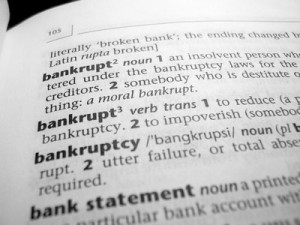 Vehicles come up in bankruptcy cases in a lot of different ways. First, filing bankruptcy puts a stay into effect that prevents repossession of a vehicle when the debtor is behind on her payments. The stay continues in effect until the bankruptcy cases is dismissed, the debtor receives a discharge, or until the court lifts the stay.
Vehicles come up in bankruptcy cases in a lot of different ways. First, filing bankruptcy puts a stay into effect that prevents repossession of a vehicle when the debtor is behind on her payments. The stay continues in effect until the bankruptcy cases is dismissed, the debtor receives a discharge, or until the court lifts the stay.
Debtors who have already had their vehicle repossessed may be able to get their vehicle back after filing Chapter 13 bankruptcy. In Texas, lienholders that have repossessed personal property must give the owner ten days’ notice that the property will be sold. Until the property is sold the debtor continues to have an interest in the property. If the debtor files bankruptcy before the vehicle is sold then the lienholder cannot sell the vehicle and must return it to the debtor.
In Chapter 13 bankruptcy debtors can pay the claim secured by their vehicle as part of their Chapter 13 plan. Including the car note in their plan allows them to cram down the claim in a couple of different ways. First, the debtor may be able to reduce the interest rate paid on the claim. A reasonable interest rate in this situation is usually measured as the prime rate plus 1% to 3%. In some instances the debtor can also force the creditor to accept repayment of the value of the vehicle as full satisfaction of the claim rather than the actual amount owed under the contract. For example, if a debtor owns a vehicle worth $15,000 but the amount of the car loan is $20,000, the debtor may be able to repay only $15,000 of the debt as satisfaction of the claim. This ability is only available to debtors who financed the vehicle loan more than 910 days before filing bankruptcy.
Debtors can also stretch out the repayment terms of the vehicle. For example, if a debtor owes $10,000 on a car loan and is paying $500 a month, they can include the claim to be paid out in the plan and stretch the repayment period to 60 months. Doing so reduces their monthly payments to $167 a month. This example does not take into account interest or the trustee’s administrative fee.